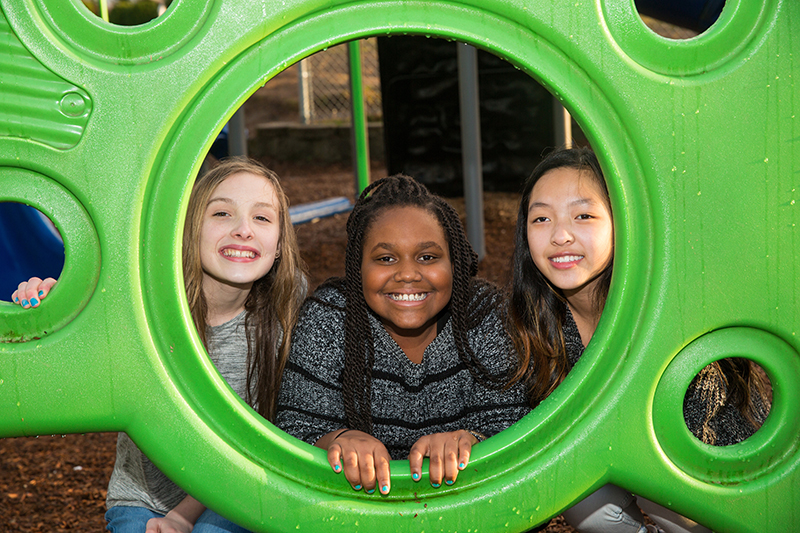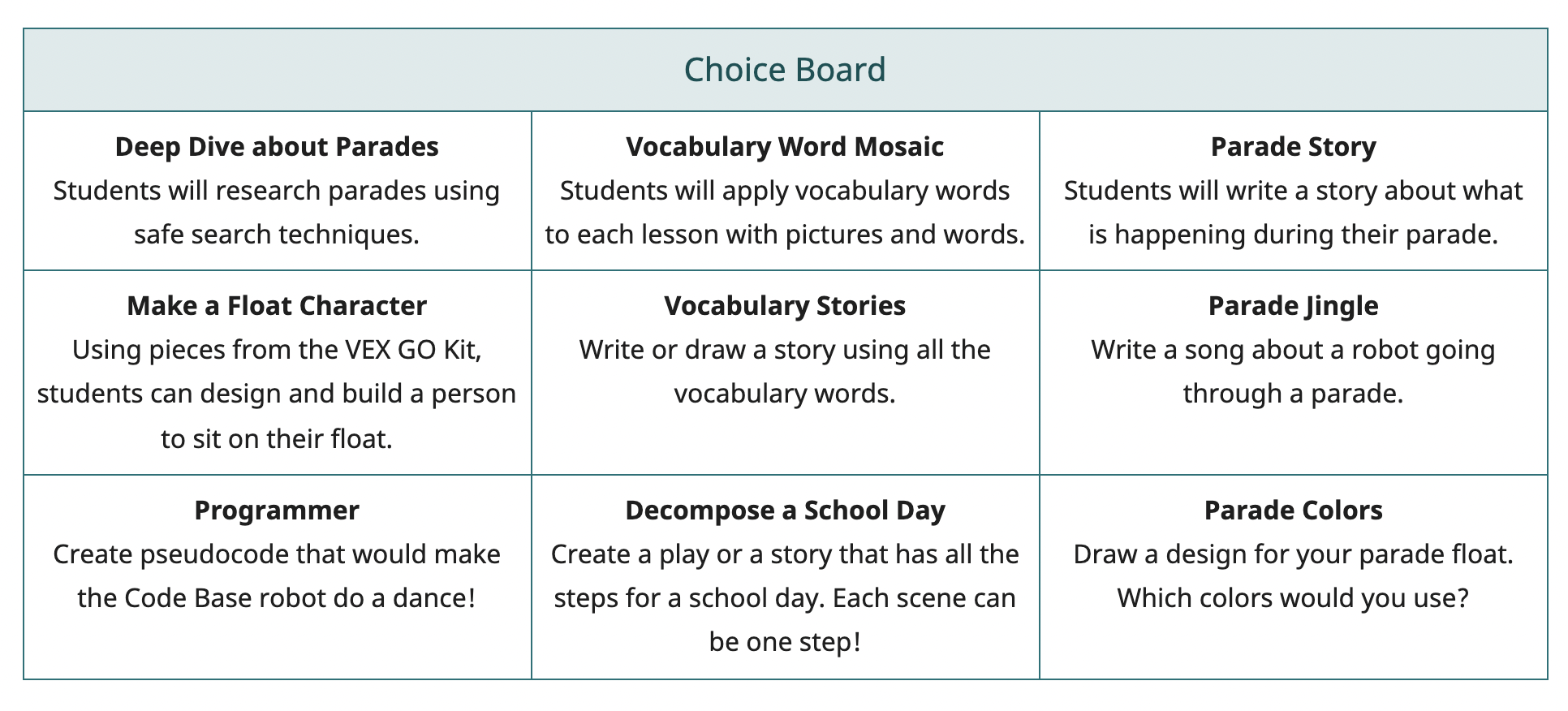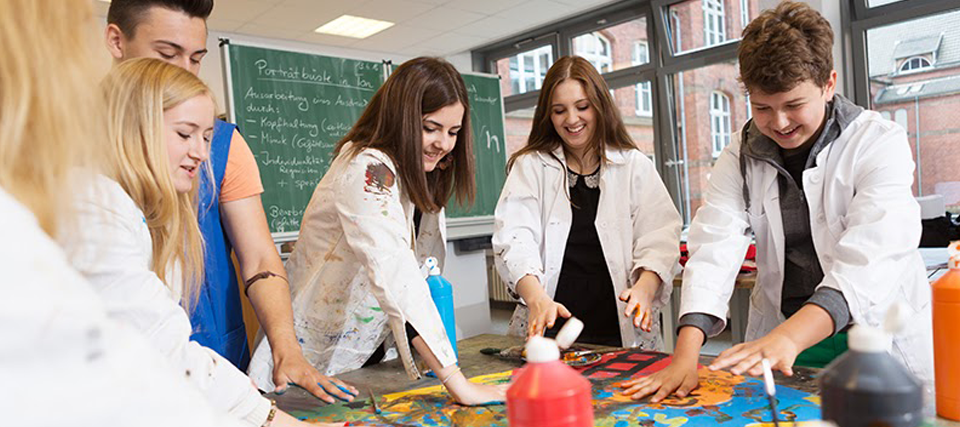The False Dichotomy Between Play and Learning
The idea that learning and play are two separate things is deeply entrenched in our education system and in society at large, and while this has always been erroneous, it is more important than ever that we leave this idea behind and embrace play as integral to learning for students of all ages.
I recently watched a webinar from CASEL in which the speakers all took a turn at defining play, and one of the speakers defined play as simply, “how children learn”. This is especially true when we are talking about effective STEM learning. High-quality STEM learning is playful - it harnesses students' curiosity and wonder and is grounded in inquiry. When students are playing, they feel free to test out their ideas without the fear of consequences. The best STEM learning is the same, encouraging students to take reasonable academic risks through the iterative process, in a supportive environment. Using the engineering design process, in which students iterate, evaluate their solutions and use what they observe to inform progressively better solutions to complex problems is an example of creating a supportive environment for STEM learning. It assures students that they can try out their ideas until they achieve a desired result without the fear of receiving a negative grade or other negative feedback, and encourages divergent thinking that students might otherwise be afraid to try.
Much recent research supports this idea. For example, the title for this post comes from “STEM Starts Early: Grounding Science, Technology, Engineering and Math Education in Early Childhood” from the Joan Ganz Cooney Center, which details recommendations for improving STEM learning opportunities for young children. The quote reads: “Efforts to improve STEM learning in the early years could help to erase the false dichotomy often drawn between children’s play and their cognitive, social, intellectual, and academic development.” The report goes on to recommend “developmentally-informed, playful learning—like block play, gardening, and exploring puzzles—which engages their own and their children’s curiosity and wonder.” Too often, activities such as blocks and gardening are seen as extras, taking a back seat to worksheets or textbooks. Play, especially guided play in which educators take cues from their students and use them as essential opportunities to infuse playful STEM learning, is a highly effective way to facilitate STEM learning in early childhood.

VEX 123 and VEX GO STEM Labs offer numerous opportunities for students to engage in engaging and fun guided STEM play, through experiential learning that is facilitated with thoughtful questioning and grounded in the engineering design process. In the VEX GO Mars Rover Surface Operations STEM Lab, students play the role of a scientist collecting soil samples on Mars, as they practice coding the GO Code Base Robot. Students iterate on their project until they are able to code the robot to drive out to collect the samples and then back again to the base. In the Share section of the lab, students answer questions about how they solved the problem, and how they would change what they did if doing it again.
In the VEX 123 Little Red Robot STEM Lab, students immerse themselves in the Little Red Riding Hood story, coding their 123 Robot to become Little Red Riding Hood and drive to grandmother’s house. Students are encouraged to share how they solved the problem and to embrace the idea that different groups will solve the problem in different ways, which is not only ok, but a valuable outcome, showing there are many right ways to get to a solution.
The Center for Childhood Creativity reports in The Roots of STEM Success, that “to become strong STEM thinkers, children need more play”. They assert that, “Through play of all sorts—from building to board games, from make-believe to magic tricks—children are testing theories about how the world works and developing the brain plasticity for lifelong learning.”
Play is not just for early childhood students, though. Students of all ages deserve the STEM learning benefits play can offer. Play takes different forms as students grow, but is no less important. In middle and high school, curricular demands and scheduling may not allow for unstructured play. However, structured games and competitions that include working with a team to solve problems in a collaborative fashion, such as VEX IQ, EXP and V5 STEM Labs provide students the opportunity to practice engineering, coding and math in a low-stakes and supportive environment. Using the Engineering Design Process is also a form of play with a purpose. When students engage in the EDP, they are expected to iterate based on “failures'', and to make multiple attempts at solving any given challenge, similar to the guided play of earlier years.
Additionally, play in the middle and high school years may take the form of students having more freedom to direct their own learning and have more voice and choice in how they learn. Trusting students to be engaged in decisions about their own learning and providing the scaffolding they need to do so, supports playful learning in middle and high school. This extends to assessment strategies as well. Student-centered assessment also places responsibility and trust in students to evaluate their own progress.
VEX IQ and EXP STEM labs incorporate student-centered assessment in multiple places. After each lesson’s Compete section, students self-reflect on their progress on each goal of the lesson. At the end of each unit, they again answer thoughtful self-reflection questions in their engineering notebooks, prior to a debrief discussion with their teacher, which helps inform what they plan to do to advance their learning moving forward. When teachers act as facilitators of learning such as in the VEX STEM Labs, and provide students with opportunities for academic choice, students are more likely to be enthusiastic and committed learners in STEM and all subjects.
“The middle years are a unique time in development. Straddling childhood and adulthood, adolescents face the challenge of establishing their own identity, defining their values and beliefs, and determining a future path. It is also a time of identification with peer groups and increasing independence. As they master more sophisticated skills and wrestle with complex ideas at school, middle schoolers seek both freedom and guidance from adults. During this time, play and playfulness can be successful strategies for middle school teachers to use to support learning.” (Project Zero, Pedagogy of Play - “A Day in the Life”)
Additionally, for all students, play not only enhances the development of STEM skills and concepts, but is the underpinning for those much-touted 21st Century skills. Creativity, collaboration, communication and critical thinking all develop from play. In a Brookings Institution report from 2020, researchers add “content” and “confidence” to the skills that come from play-based learning, and call for an overhaul of our education system that reflects the power of play.
In the meantime, many educators are unfortunately not free to restructure their school days and curricula to include more play. So, what are some easy ways to work more playful learning into the school day?

Make the most of transition times
Working playful learning into the many transition times throughout the school day is an easy and fun way to add some play to your day. For younger students, turn clean-up time into a game, or challenge students to choreograph their movements from place to place by adding movement patterns. You can also pull in ideas from units you are studying to enhance the playfulness of transitions. If you are in the midst of a science unit on amphibians, for example, students can choose their favorite amphibian and move in the manner of that animal down the hallway! For middle or high school students, allow them to create their own transition hand signals and routines. You’ll probably find that making transitions more playful also minimizes disruption during transition times.
Include a variety of cooperative and competitive games when practicing concepts and content
Including a variety of both cooperative and competitive games is beneficial for students of all ages. There are many incredible math games that combine skills, strategy and problem solving, “24”, and escape room activities come to mind, but the possibilities are numerous. Having students compete in teams is better still, adding collaboration to the skills mix.
Give students free play, or freedom of choice, whenever possible
If possible, give students some free play time each day, or freedom to choose how they are learning. Choice boards, such as this one from the VEX GO Parade Float STEM Lab are an excellent way to do this.

Additionally, avoid using free play time as a reward or the removal of free play time as a punishment.
Read and Learn more About the Benefits of Play
Any of the resources linked in this article have excellent information about the importance of play in learning and how to incorporate it into your classroom. Read as much as you can and share what you learn with others.
STEM learning and play depend on one another. Bringing more play and playful learning into students’ school days is essential. And, not only will students benefit academically, they will also have more joyful school experiences and a more positive mindset towards school and learning.
Aimee DeFoe is a Senior Education Developer at VEX Robotics.
Like this article? Discuss it in the VEX Professional Learning Community.
